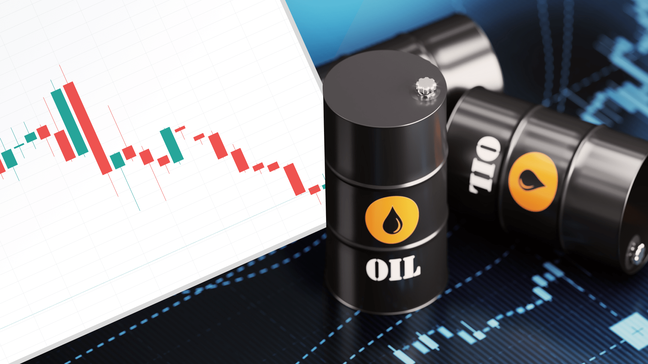Risk aversion dominates the market momentum early Monday, especially after downbeat weekend headlines and disappointing data from major economies. Even so, the US Dollar failed to recover amid increasing talks of the Fed’s rate cuts and fresh doubts about the US economic transition.
That said, traditional risk-safe assets like the Japanese Yen (JPY), Swiss Franc (CHF) and Gold manage to remain firmer whereas equities, commodities and bond yields are mostly down.
EURUSD edges higher amid broad US Dollar weakness, backed by Friday’s disappointing US jobs report, but the GBPUSD stays depressed on the UK-linked pessimism.
USDJPY marks a heavy slump and so does the USDCHF but the USDCAD refreshes the yearly high on softer crude oil prices and dovish bias about the Bank of Canada (BoC). It’s worth noting that the AUDUSD justifies its status as the risk barometer and ignores firmer data at home and in China while the NZDUSD follows suit.
BTCUSD and ETHUSD were also bearing the burden of risk aversion and failed to cheer the US Dollar’s weakness. The cryptocurrencies’ weakness could be linked to the latest blow to the odds favoring Donald Trump’s US Presidency as Kamala Harris gains Democratic candidature for running in the November election. Additionally, mixed chatters about the Bitcoin custody and spot Ethereum ETF also weigh on these investment avenues.
Following are the latest moves of the key assets:
- WTI Crude oil drops for the third consecutive day as sellers attack June’s low surrounding $72.40 by the press time.
- Gold lacks clear direction near $2,430 after posting the biggest weekly jump in a month.
- The USD Index drops to a five-month low, down 0.30% intraday as we write.
- Wall Street closed in the red and kept the Asia-Pacific shares down. Further, equities in Britain and Europe print minor losses during the initial trading hour.
- BTCUSD and ETHUSD both drop more than 10.0% intraday to around $52,000 and $2,300 at the latest.
US data, Fed bets drown US Dollar...
Friday’s disappointing US employment report joined the downbeat Factory Orders for July to drown the US Dollar amid dovish Fed bias, as well as due to the fresh fears about the US economic weakness. On the same line were headlines surrounding escalated geopolitical tensions in the Middle East and weak earnings reports from Amazon. With this, the US Dollar Index (DXY), a gauge of six major currencies versus the US Dollar, marked the biggest daily slump since November 2023 and stayed pressured at the lowest in five months.
Be it the lower-than-expected US Nonfarm Payrolls (NFP) or the higher Unemployment Rate, not to forget softer wage growth, the US jobs report for July came in all grey and bolstered the bond market bets for the Federal Reserve’s (Fed) rate cuts, which in turn drowned the US Dollar. On the same line was a contraction in the US Factory Orders data and dovish comments from Chicago Fed Governor Alan Goolsbee.
It’s worth noting that the recession indicator per the Sahm Rule also exerted downside pressure on the Greenback. That said, geopolitical tensions in the Middle East, wherein Iran and Hezbollah brace for an attack on Israel, also strengthened the risk-off mood but the US Dollar fails to cheer the seem amid dovish Fed bias and fresh challenges for the US soft landing concerns.
The Greenback’s weakness, however, appeared less helpful to the riskier currencies like the Australian Dollar and commodities due to the broad risk aversion. With this, the Japanese Yen (JPY) and Gold prices rally while equities and bonds bear the burden of the market’s pessimism.
It’s worth noting that the EURUSD defends the previous weekly gains despite no major updates from home but the GBPUSD remains pressured after declining in the last three consecutive weeks amid fears of the UK’s inability to defend the previous growth.
USDJPY drops to the lowest since early 2024 as JPY’s haven appeal joins concerns about the Bank of Japan’s (BoJ) further rate hikes, backed by the latest BoJ Minutes. However, the Japanese policymakers’ readiness to intervene offered intermediate bounces in the Yen pair prices.
AUDUSD fails to cheer the US Dollar’s weakness, upbeat China’s Caixin Services PMI, and clues of firmer inflation pressure in Australia as traders brace for the Reserve Bank of Australia’s (RBA) dovish halt. NZDUSD also reversed the previous week’s rebound while tracking the pessimism for Antipodeans whereas USDCAD rises to the highest level in nine months as downbeat Crude Oil prices joined chatters about the Bank of Canada’s (BoC) more rate cuts.
Crude Oil gains major attention, after the JPY, as it fails to benefit from the Middle East tensions and concerns about the US tropical storm Debby. It’s worth observing that Saudi Arabia announced the first increase in its price of Arab light crude for Asia but failed to inspire the energy buyers amid fears of economic weakness hindering oil demand.
Gold price remains shy after posting the heaviest weekly jump in a month. While the US Dollar’s weakness and a rush for risk safety favor the XAUUSD buyers, an absence of major data and chatters about China’s ability to buy more Gold challenge the precious metal’s upside.
- Strong buy: USDCAD, USDJPY, US Dollar, Silver
- Strong sell: AUDUSD, NZDUSD, GBPUSD
- Buy: BTCUSD, ETHUSD, Nasdaq, Gold, DJI30, USDCNH
- Sell: DAX, FTSE 100, EURUSD, Crude Oil
PMIs in the spotlight…
Be it the final readings of July PMI numbers for the Eurozone, Germany, the UK, and the US or the US ISM Services PMI for the said month, activity data will be in the spotlight for the day. While the scheduled data isn’t expected to offer much direction to either the US Dollar or other riskier assets, the prevalent risk aversion and dovish Fed bias may keep the Greenback on the back food. However, the EURUSD’s rebound appears less convincing while the USDJPY can also witness a corrective bounce if the US statistics print upbeat numbers.
May the trading luck be with you!




